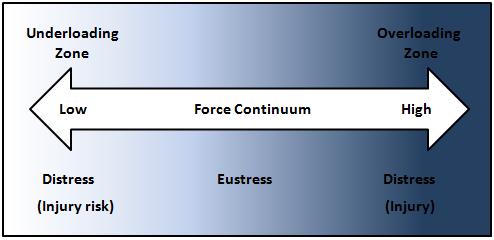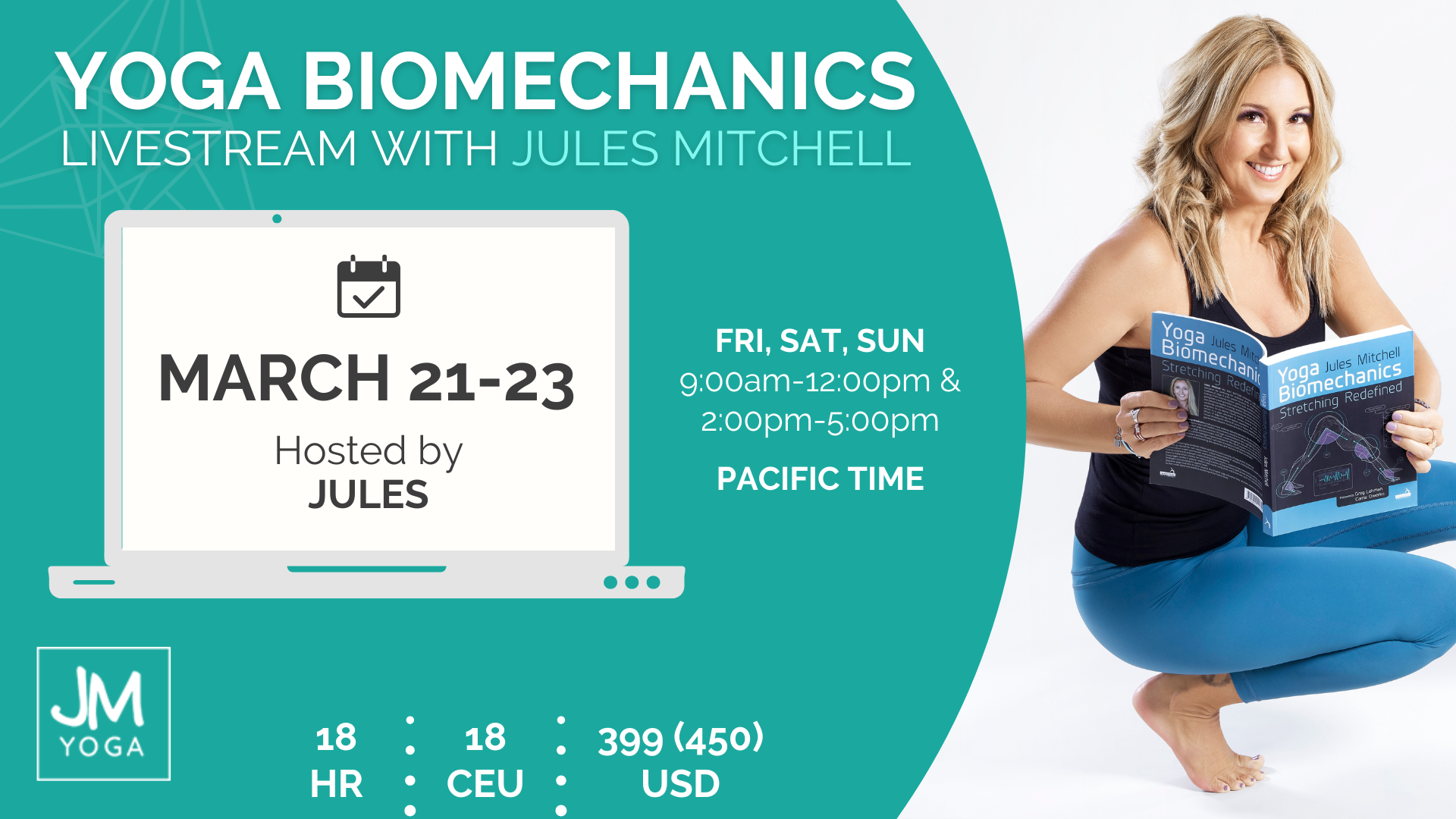Last week, I met with my thesis adviser to get some feedback on this never ending immensely satisfying project – a comprehensive literature-based research project on stretching. One of the things she suggested was that I include the principle of progressive overload in the chapter about how the body adapts to loads. It seems I had covered the topic in a long-winded, round about sort of way by referencing several other principles and theories.
- The Goldilocks Principle: too much and too little are unfavorable, but when you get it just right, the adaptations are favorable.
- Wolf’s Law: bone will remodel its architecture to adapt to an applied load.
- Davis’ Law: a less clearly defined theory which refers to the adaptable nature of soft tissue.
But somehow, I skipped over progressive overload – which states loading must progressively increase above normal loading patterns to stimulate growth.
While I was muttering under my breath beaming with gratitude about the additional writing and editing that this addition was creating for me, I began to struggle with how I would tie it into stretching. After all, progressive overload is usually discussed in terms of bone and muscle in relation to resistance training.
For example, when lifting weights, increasing the volume (number of repetitions) and intensity (percentage of maximum capacity) will stimulate hypertrophy (muscle growth). After just a few weeks of loading muscles through lifting weights, muscles get stronger and the demand can be ever increased by gradually adding more weight (increasing the load). Conversely, try to lift more weight than the muscle at that time has a capacity for, your lift will be unsuccessful. Take a few weeks off and the muscles may not retain the capacity to lift even the original load.
The same rules apply to progressively overloading bone. A 2013 study found bone marrow edema (swelling) in subjects who transitioned gradually from an athletic shoe to a minimalist shoe for 10 weeks.¹ Here is an example of overloading that was not gradual enough to allow for the adaptation. The bones of an athletic shoe wearing runner were not adapted for the particular magnitude, direction, and frequency of the loads caused by running in a minimalist shoe.
Let’s look at the adaptation of tendons and ligaments when progressively loaded. Gradually increasing the demand on connective tissue stimulates collagen production and initiates strengthening. Oppositely, apply a stretch (tensile load) far greater than the capacity of the tendon or ligament and that tissue weakens or fails. Finally, insufficient stretches (tensile loads) fail to strengthen the tissue. Tendon stiffness increases with resistance training but only at heavy loads (70% 1 rep max).2 Light loads (50% max voluntary contraction), and static stretching are not sufficient loads.3,4
The critical observation regarding progressive overload is the nature of adaptation to overloading and underloading. Exactly how the tissues are adapting is what is important. If you strengthen muscle, it gets stronger but not shorter. Same with bone. It is the internal strength of the tissue which adapts.
Bones, when exposed to consistent compressive stresses grow in strength and, particularly in developing children, length. Bones do not develop into shorter, more compressed segments in response to gradual overloading. Bones may break in response to overloading beyond their capacity, unable to withstand the stress, but they do not lose longitudinal length.
By that rationale, tensile connective tissue would not grow longer in response to stretching. Ligaments would get stronger in order to develop a greater capacity to withstand tensional stresses (provided the stresses are high enough, which passive stretches are not). Ligaments may tear in response to overloading beyond their capacity, unable to withstand the stress, but they do not adapt to permanently gain longitudinal length.
It’s time to retire the old model of “stretch it to make it longer,” don’t you think?
PS. I don’t expect you to click on all the hyperlinks. But some of our readers are joining us a bit late to the party, so I’m helping them get caught up in the conversation.
PPS. The next time you hear from me on the blog, I will have submitted my final draft of my thesis! Finally.
PPS. You may never hear from me again on the blog because I am turning 40 next week and according to Jeff (my husband/boyfriend), life ends at 40. He turned 40 last month, so he must know something I don’t. I feel like I’m 20 so I don’t know what the big deal is.
_________________________________________________________________
[1] Ridge, S. T., Johnson, a W., Mitchell, U. H., Hunter, I., Robinson, E., Rich, B. S. E., & Brown, S. D. (2013). Foot bone marrow edema after a 10-wk transition to minimalist running shoes. Medicine and Science in Sports and Exercise, 45(7), 1363–1368. doi:10.1249/MSS.0b013e3182874769
[2] Kubo, K., Kanehisa, H., & Fukunaga, T. (2002). Effects of resistance and stretching training programmes on the viscoelastic properties of human tendon structures in vivo. The Journal of Physiology, 538(1), 219–226. doi:10.1013/jphysiol.2001.012703
[3] Kubo, K., Kanehisa, H., Miyatani, M., Tachi, M., & Fukunaga, T. (2003). Effect of low-load resistance training on the tendon properties in middle-aged and elderly women. Acta Physiologica Scandinavica, 178(1), 25–32. doi:10.1046/j.1365-201X.2003.01097.x
[4] Kubo, K., Kanehisa, H., Kawakami, Y., & Fukunaga, T. (2001). Influence of static stretching on viscoelastic properties of human tendon structures in vivo. Journal of Applied Physiology (Bethesda, Md. : 1985), 90(2), 520–7. Retrieved from http://www.ncbi.nlm.nih.gov/pubmed/11160050
Extend Your Learning: Online Education With Jules
Yoga Biomechanics Livestream
My flagship 3-day livestream course is for teachers who have an insatiable curiosity about human movement and kinesiology, are eager to know what the research says about yoga, and are open to accepting that alignment rules aren’t always accurate. Includes 30 days of access to the livestream replay and slides. 18 CEUs. Learn more >



Another great discussion. So dies that mean we don’t reslly Overstretch ligaments? If so, then that is paradigm shifting information. What you have stayed above literally validates yin Yoga techniques. So next question…. What are the signals one should listen too to make sure we don’t load the ligaments to the point if tearing? And are micro tears ok, as we have been told in muscles is what makes them stronger. At what point do micro years become injurious tears? 40 is the new 30 (trust me on that one)
Chrys, I’ve answered this on facebook. I’m thinking about shutting down the comments. Keeping up with the spam is too time consuming. People can chat with me on twitter and facebook. Since you posted the same question over on social media, I answered it there.